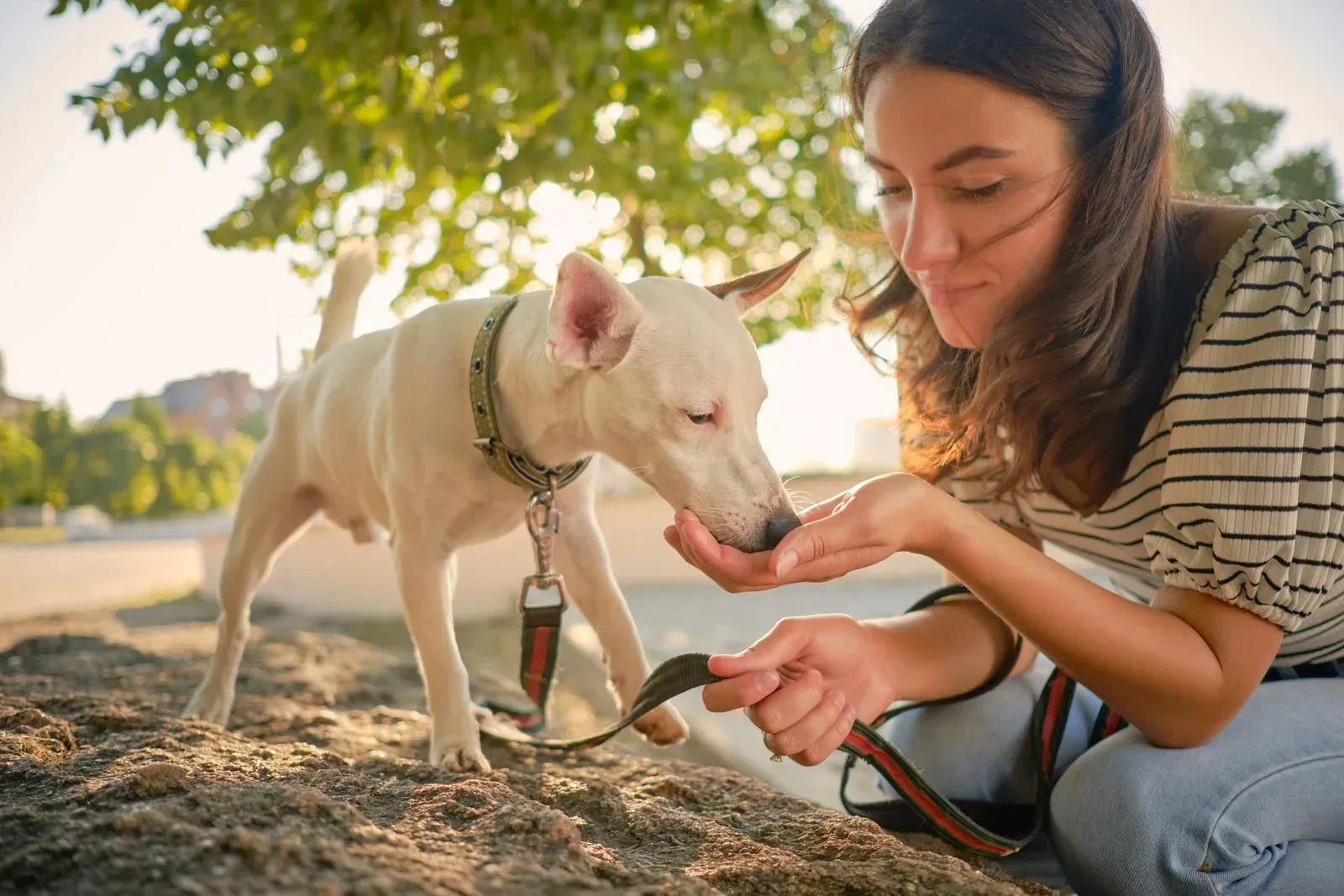
All about brindle basenji mix
When you are considering purchasing a brindle basenji mix, you must consider the personality traits of this medium-sized hound. A Basenji is an independent, intelligent, and affectionate dog. Its instinct is to hunt anything that moves. These dogs often chase rabbits, squirrels, and cats. They are not instantly responsive to commands, but do respond to affection. Regardless of the breed, this medium-sized hound will need daily exercise.
Basenji is a medium-sized hound dog
The Basenji is a medium-sized wolf-like hound dog with a short, fine coat. Its coat color may be chestnut red, black, or tricolor. A white chest and tail tip are the hallmarks of this breed. The Basenji is generally social and outgoing, although they don’t like to be left alone for long periods. Basenjis should always be crated when unattended.
Although a medium-sized hound dog, the Basenji can be highly intelligent. This breed is also extremely trainable and is a good choice for first-time dog owners. Basenjis do need enough exercise and a regular schedule of playtime. They are referred to as the “barkless dog” of Africa, and have a short, silky coat. They have a short, muscular body and a highly alert demeanor.
The Basenji breed originated in the Congo region of West Africa, but was not exported to Europe until almost 1900. The first two Basenjis brought to Britain died of distemper before breeding, while the second attempt ended in the death of the female. The remaining dogs were imported to the United States by a breeder in Boston, and the breed was officially recognized by the American Kennel Club in 1943.
It is a hunting dog
According to historian Craig Koshyk, a hunting dog is a working or companion animal. They perform many important tasks for their owners including hunting, herding, and bringing down game. These animals can be classified according to their function, whether that be retrieving, bringing down hogs, or hunting ducks. Some dogs are better suited for one function than others. Listed below are some types of hunting dogs:
The Great Dane is a large breed of dog in the mastiff family. This breed is a legendarily giant. It may not have originated in Denmark, though it is commonly depicted in France and Germany. Originally, the Great Dane was a hunting dog, trained to catch and hold down large game. Unlike today’s working dogs, the Great Dane is a very loyal companion.
A hunting dog’s best trait is its affinity for scent. The American Leopard Hound has a high sensitivity and is known for tracking prey by scent. It is an excellent hunting companion and bonds with humans of all ages. Though this breed is a hunting dog, it is also a wonderful pet for family life. Because it is a hunting dog, the Leopard Hound is especially suited for homes with a yard. While it enjoys long walks, it also likes canine sports.
It is a show dog
The Basenji breed originated in Africa and was brought to Europe and North America in the early 1900s. The breed was originally used to flush small game into hunters’ nets, but was later adopted as a family pet. The breed was first recognized by the AKC in 1943, and the AKC stud book was later reopened to fourteen new imports. The brindle color is now the most common color for Basenjis.
The Basenji is a small, short-haired dog that can be red, black, or brindle. Its head is wrinkled, especially around the forehead. Its large, dark-colored eyes are almond-shaped and set far back. The Basenji’s short, flat back contributes to its agility. The breed is a good choice for a show dog, and they are excellent family pets.
The Basenji is an affectionate, independent breed that is extremely intelligent. Its yodel is the breed’s way of communicating. It also enjoys the traditional games of chase and trail. While the Basenji will not follow its owner everywhere, he will play around with them and amuse themselves. He may also get into mischief and destroy property. While the Basenji is a great family pet, they may not be the best choice for every household.
It needs daily exercise
Your brindle basenji mix needs to be active and have regular physical activity. Basenjis need at least an hour of vigorous exercise each day. It should be on a leash and be supervised around the yard. They are highly active dogs that enjoy running, jogging, and other high-impact activities. Exercise your Basenji by engaging him in dog sports such as lure coursing or agility. Its hunting instincts and outstanding problem-solving skills are great assets for training.
The basenji is highly active and can easily adapt to apartment life. Although they do not bark, they do have some destructive behaviors. They can yodel or scream when angry. These dogs require daily exercise and socialization. Basenjis are known as the “barkless dog” from Africa. This breed is known for its short coat, muscular body, alert demeanor, wrinkled brow, and curled tail.
Basenjis are sensitive dogs, and the breed cannot bear a heavy hand. Be sure to measure your dog’s food carefully and exercise them daily. It is important to remember that your puppy has small ribs, so it may need daily exercise. If you are unable to do that, the breeder will be happy to give you a new puppy. If you’re not sure, ask the breeder or rescue organization you are choosing to adopt if the parents have been screened for inherited health problems.
It is a yodeling dog
If you’ve ever wondered what the heck a yodeling dog is, you’re not alone. It is an African breed known as the Basenji. These dogs are notorious for their unique vocalizations, which are akin to singing. Unlike other breeds, they only yodel when they are excited by a particular sound. You can also train these dogs to yodel on demand.
While the American Water Spaniel is one of the most famous yodeling dogs, there are other breeds that yodel as well. Irish Water Spaniels and Basenjis are also known to yodel. The breed is rare and has only recently gained popularity because of its beautiful appearance. In addition to being adorable, American Water Spaniels also have a distinct and unique voice.
Although this breed of dog is often characterized by a howl, the exact reason why it yodels is unclear. Yodeling dogs have similar traits to Pariah dogs. The difference is the shape of their larynx. While yodeling sounds like a Swiss App, it is a distinct breed of sighthound that does not bark. While the Swiss Apps do yodel, they are not actually Pariah dogs.
It is prone to Fanconi’s syndrome
Basenjis are prone to Fanconi Syndrome, which is an inherited condition characterized by kidney failure. The disease may also be secondary or idiopathic. Basenjis with Fanconi Syndrome may experience abnormal bone development and may have excess drinking and urination. If left untreated, the condition can lead to kidney failure, muscle wasting, and anemia. The disease affects approximately 2% of the basenji breed.
There are genetic conditions associated with the Basenji breed, including glaucoma and progressive retinal atrophy. Some Basenjis may develop coloboma eye and persistent pupillary membranes. If you notice any changes in your dog’s eye, report them immediately. You can ask your breeder to have your puppy screened for Fanconi’s syndrome. You can also check for patellar luxation in Basenjis.
The Basenji is a small dog, weighing around 16 to 17 inches. The full-grown size of a Basenji puppy is one year old. It is an extremely active dog and requires plenty of space to play. They are not suitable for homes with small pets, though they do well with cats if socialized and trained from an early age. If you don’t have any other pets in the home, Basenjis will not do well with other animals, including cats. They are also difficult to train, so they are best kept apart from small animals.
It is a good fit for meek or passive owners
This dog is a low-maintenance breed that is known for its quiet nature. The basenji does not bark or shed and cleans itself just like a cat. However, it needs daily exercise and should not be left alone for more than an hour a day. The breed’s personality is independent and will assert itself when left alone. Meek and passive owners may not be the best fit for this breed, as it requires a lot of exercise.
This breed is not a good fit for meek or lazy owners because it can become dominating if provoked. A good owner must be firm, enforcing rules and not allowing the dog to take on the role of pack leader. It is also important to note that this breed responds to reward-based positive reinforcement, rather than harsh treatment. Physical punishment will damage the bond between you and your dog, and can cause the dog to become aggressive.


